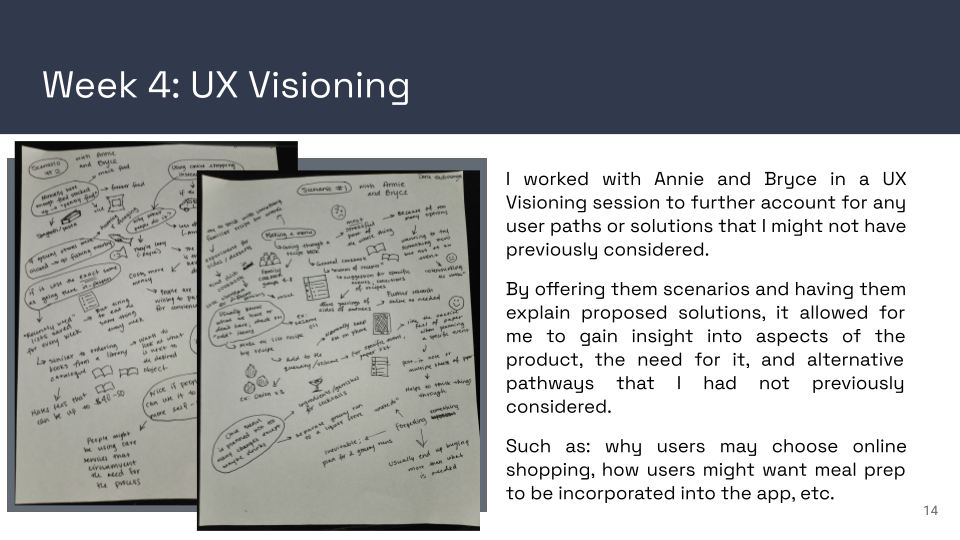Presentation: Conceptual Grocery App
How to analyze and approach a saturated market with an appealing, stand-out product.
Studying the competition: their successes, failures, and what defines their brand.
Performing contextual inquiry on users: how do real people use real products?
Observing how users interact with prototypes: what’s working and what’s not.
Building a product: how does the user influence the creation of the product?
Team
(Myself) Daria Zadorozhnaya
Research & development
User Testing & Interface
Prototyping
Type
UC Berkeley Extension Course Project
Year
JAN 2023 - APR 2023
What Comes Before Launch
Before I could actually put my own product out into the world, I needed to learn about several key factors:
What is already on the market?
How do users interact with those and how would my own be the same or any different?
What’s the draw of my product versus what is already established and known about?
What makes my competitors successful and what can I learn from that?
What are users complaining about and how do I avoid it for my own product?
























To Summarize:
This app still requires a great deal of work before it can be called a final product suitable for market release, but the experience and information it provided me with in regards to research, user interact (in both observation and testing), and how to put feedback into practice are invaluable. Trying to release a product into an existing, saturated market isn’t a simple task, and it requires a significant amount of preparation and planning in as many fields as possible.
Outcomes
A Figma (digital) prototype that allows for free-form exploration of the app.
Critical paths include:
Selecting items and viewing their information.
Adding new items to the cart.
Editing the cart in various ways.
Completing the purchase.
Selecting the method of product pick-up or delivery.
UX elements and deliverables.
Improvements in:
Using Figma.
Using UX methods effectively.
Creating paper prototypes and translating them digitally.
What I Learned
First-hand experience with a number of UX methods. This includes competitive analysis, contextual inquiry, affinity diagrams, crafting personas, storyboarding for UX, visioning, prototyping on different fidelity scales, wireframes, and more.
How to use Miro to create deliverables.
How to use Figma to create deliverables and prototypes.
Further understanding of how to interact with users and interpret their wants, needs, frustrations, and obstacles for using the product.
What Comes Next
Further improvement to the digital prototype, with incorporation of the rest of the project into the new style represented by the annotated wireframes.
Presenting said updated version for more user testing until the product is easy to navigate, helps users complete tasks, and provides a satisfying experience.
